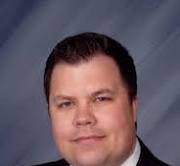By Brian Massie, A Watchman on the Wall
Updated 12/28/23 2:00 pm:

A big thank you to Ben Capelle for taking the time to answer questions we received from Lake County citizens.
1.From which manufacturer are your electric buses?
Answer: New Flyer Inc makes both our battery electric and diesel local rout buses.
2. How many electric buses do you have? }
Answer: 10
4. What is the average cost of them?
Answer: $839,000 each
5. Do you have any buses from Proterra?
Answer: No
6. Have you installed auxiliary heaters on your electric buses and if so, are the heaters diesel, gas, or propane fired?
Answer: We included the installation of auxiliary heater as part of our specification due the cold weather we get in Cleveland. They are diesel fired. We tried to get propane fired ones, but they are not currently an option. They are only used in extreme, extended cold.
7. Have you installed auxiliary air conditioners on your electric buses and if so, are the air conditioners diesel, gas, or propane fired?
Answer: We do not have auxiliary air conditioners,.
8. What is the manufacturer’s stated range? What is the actual range in the winter? Summer?
Answer: Bus companies have stopped listing range in miles/km they instead list the amount of energy that can be stored. The battery capacity is part of the specification process for the transit system based on how they want to run the bus, currently New Flyer lists a capacity from 160 to 520 as options. Our buses have a capacity of 214 kilowatts. We intentionally selected a smaller battery because our buses charge once an hour. If we were trying to run an entire day without charging we would have opted for a different configuration. The actual range/efficiency is temperature based, so I will use 30 degrees for summer and 80 degrees for summer. I can give you numbers based on other temperatures if you would like.
At 30 degrees our buses spend 1.7 kWh/mile At 80 degrees our buses spend 1.5 kWh per mile.
If we used 100% of the battery that would me we could go 125.8 miles in the winter and 142.6 miles in the summer. Typically we travel 20 miles or less between charges, so we have not experienced any range issues.
9. Do you ever have to sideline an electric bus in the winter and replace it with a non-electric bus because it won’t operate effectively in the cold?
Answer: No, we planned to operate our buses in the cold from the very beginning.
10. What is the percentage of electric buses out of service more than 10% of the time?
Answer: I will need to get this from my Director of Maintenance. However, generally supply chains for buses have not recovered well and since COVID we often wait more than 90 days for parts for all of our buses, not just electric.
11. How long does a battery last?
Answer: We are estimating 10-15 years, but do not know for sure.
12. How much does it cost to replace a battery in labor? How much is the battery?
Answer: The batteries in our buses are serviceable without removal of the whole pack, so this would depend on the nature of the failure. Generally if a cell fails we can replace just that cell and not the whole pack. I will need to have my Director of Maintenance get me a price on the whole pack.
Updated: 12/28/23 2:00 pm:
Labor Cost: $1,500. This includes labor to draw down all batteries to correct voltage before installing the new battery. This also includes the labor of 2 techs working on a high voltage system. Battery Cost: $7,279.63 Laketran has not had to purchase any batteries.
13. Are any of the materials in the battery from the Congo? Can you verify that no battery materials were mined by children and/or slave labor?
Answer: The batteries were manufactured by a company in Michigan, I forget the name I will get it from my Director of Maintenance. The company New Flyer is now using is called American Battery Solutions. All of our buses have to meet strict Buy America requirements, so it is very unlikely any of the components came from overseas, however we do not go beyond the required Federal certification, so I will need verify the source materials.
Updated 12/28/23 2:00 pm:
Manufacture: Xalt Energy. Xalt energy states they do not use material sourced from the Democratic Republic of the Congo. More information can be found at the following. https://www.xaltenergy.com/conflict-minerals-statement/. They do not disclose the exact location of where the materials are sourced from.
14. How many times have you had to discontinue service or replace a bus on a route due to battery, range, or other problems?
Answer: Buses replace others on routes all the time, for a huge variety of reasons. We have never been unable to provide service due to an electric bus, or any other bus issue.
15; Where does the electricity come from to charge the electric buses? Is that power plant fired by gas, coal, or nuclear?
Answer: We do not officially verify where our power is generated. The proximity of the Perry Nuclear Power plant would lead me to assume it is nuclear, but again I don’t have a way to verify that.
16. What is emitted by the fuel at the power plant to fully charge a bus?
Answer: I do not know, I think that question would need to be answered by First Energy, which is the company we buy power from.
If you have any additional questions or would like to go into further detail feel free to let me know. I would provide the additional information once my team is back from the holidays. Thanks!
Ben Capelle | CEO
Direct (440) 350-1001
*****
Categories: Lake County - General
